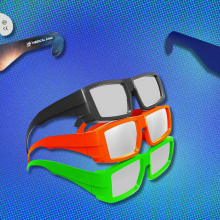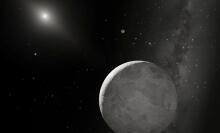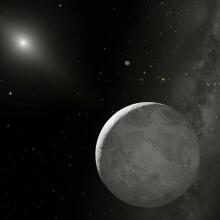Before the James Webb Space Telescope looked at Uranus, most people's idea of the seventh planet was not much more than a bright blue ball, bopping along in the distant solar system.
That changed after the leading infrared space observatory began studying the ice giant world earlier this year, bringing into focus a planet with vertical rings, more than two dozen moons, intriguing storms, and a bright spot at its north pole, known as a polar cap.
Now new images from the telescope, a collaboration between NASA and the European and Canadian space agencies, are shedding light on this seasonal occurrence at Uranus' north pole, which seems to appear when more sunlight hits this region as the planet nears its solstice. The polar spot then vanishes in the fall.
Tweet may have been deleted
Compared to the Webb snapshot of Uranus in April, some details of the feature — the bright, white inner cap and the dark lane at the bottom of the polar cap, farther down the planet — are easier to see.
"Several bright storms can also be seen near and below the southern border of the polar cap," according to a NASA statement. "The number of these storms, and how frequently and where they appear in Uranus’s atmosphere, might be due to a combination of seasonal and meteorological effects."
When Uranus reaches its next solstice in 2028, astronomers hope to observe any changes to these features. Getting to the bottom of them will help scientists understand the world's complex atmosphere.

Because Uranus spins on its side, it has the most extreme seasons in the solar system. For nearly a quarter of each Uranian year, the sun shines on one pole, thrusting the other half of the planet into a dark winter lasting more than two decades.
Uranus, nearly 2 billion miles from Earth, is made from "icy" materials, such as water, methane, and ammonia, wrapped around a small rocky core. For Uranus, it takes 84 years to make a trip around the sun.
Webb was able to capture Uranus’ dim inner and outer rings, including the elusive Zeta ring – the thin, faint ring closest to the planet. It also caught many of the planet’s 27 moons.
Topics NASA

























